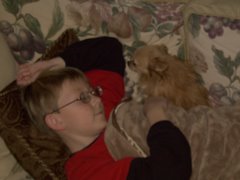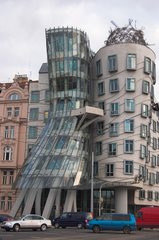The Poetry Project
Acknowledgment: Credit to Dr. Casualene Meyer, who gives credit to Helen Bedtelyon, her high school English teacher, for the principle part of this assignment.
Tip: Get started on this assignment right away by selecting and studying a painting. Your mind can then work on it even while you are doing other things.
Learning Goals:
• To better understand and appreciate the intellectual/cultural activity of creating literary text, specifically, poetry.
• To better express yourself in writing by creating a poem and answering questions about your work.
• To critically analyze your own creative process and also the poetry of a classmate.
• To develop creative capacity by crafting a poem and considering yourself a creator of literary text as you engage in an interview about your own work.
Assignment Summary:
Art inspires art. An example of this is W.H. Auden’s “Musée des Beaux Arts,” inspired by Brueghel’s painting, Landscape with the Fall of Icarus. After reading this poem (565-566) and studying the painting that inspired it, you will choose carefully a painting to craft a poem about in similar fashion. What you are creating is an emulation of Auden’s poem. Your poem will have certain requirements (see below). Finally, partners will exchange poems and conduct electronic interviews about the creative process. Poems, links to paintings, and edited interviews will be posted by the deadline.
Instructions:
Always ask questions if you cannot figure things out on your own quickly. Time is short at this time of the semester, and we’re here to help each other.
1. Study Auden’s “Musée des Beaux Arts” as well as the painting which inspired it. Pay attention to the structure of the poem in relationship to the painting. What is the first stanza about? How does it operate? What is the second stanza about? How does it operate?
2. Find a high-quality painting about which you would like to write a poem. Be very careful to choose work that is worthy of your time and suitable for an intelligent general audience. Try Web Gallery of Art (www.wga.hu ) for browsing or to locate a specific painting.
NOTE: You can either start with a painting and "extract" the message/problem from it, or you can have a problem/condition in mind and browse to find a painting that illustrates it. That choice is yours to make.
3. Craft a poem that meets these three minimum criteria:
The poem follows Auden’s two part structure of a first stanza that makes a general statement and a second stanza that shows how the painting illustrates the general statement. Please make direct reference to the painting in the second stanza, just the way Auden does.
The poem is at least ten lines long.
The poem uses a traditional poetry form (such as a sonnet) or creates and follows its own rules. In other words, it follows some kind of identifiable pattern. An easy choice would be a rule like this: each line must have seven syllables. Syllable counting is fun, fairly easy, and can yield some really neat stuff. Ironically, following a rule boosts creativity. Please make your form readily apparent.
4. Form partnerships, and have one partner email me to inform me who will pair with whom. I have made a spot on the bulletin board for people seeking interview partners. Anyone who hasn’t formed a partnership by April 19 will be assigned a partner.
5. Send your poem and art link to your partner no later than April 23 at 5:00 p.m.
6. Read your partner’s poem and study it. Prepare seven (7) GOOD questions to ask about its composition, form, content, and so on. (We’ll spend some time on 4/19 discussing how to form good questions.)
7. During class on April 24, partners will conduct interviews. Electronic (or at least partially electronic) interviews are recommended simply because it will ease the efforts of preparing your interviews. Two possibilities are asynchronous e-mail interviews OR synchronous IM/ chat interviews.
8. Edit the interview which YOU conducted. Editing means to copy and paste either the e-mail text or the chat text into a Word document, and then remove anything that looks ugly (such as the “>>>” on an interview). In addition to visual appeal (again, visual appeal is not fancy fonts so much as neatness, regularity, and a set up that makes it easy to locate information), your interview should use proper grammar and mechanics. It’s okay to omit material (use ellipses) and fix your interviewee’s sentences if they need help in their delivery.
9. Exchange interviews for final approval from your partner. Discuss and make any requested changes.
10. Send the interview to your interviewee.
11. Submit, by the deadline, your poem, the art link, plus the interview you conducted and the one conducted on you. Note that your poem is due for the interview portion of the assignment on April 24—the deadline for New Tricks. What a coincidence! I encourage you to submit your poem to New Tricks at the same time you send it to your partner.
12. HAVE FUN! I have seen amazing poems come from this assignment.
Your Project’s Format: On the first page of your document, center your poem top to bottom on the page but NOT left to right—do NOT center every line of the poem. Start with the title (same size and font as the body of the poem), skip a line, and begin the poem. After the poem, provide a link for finding the painting online. (If you like, you may also insert an image of the painting.)
Double or single space, depending on what the poem seems to require (use your aesthetic judgment).
Use a reasonable (boring) font, such as Times New Roman 12 point; no fancies, bolds, or biggies anywhere.
After the link to the painting, insert a page break. On the next page of your document, present the interview your partner conducted with you, followed by the interview you conducted with your partner. (There will be some redundancy I realize, but that way everyone is covered.) The interviews should be single spaced with double space between each Q or A. The interview should look like the script of a play with you and your partner’s last names before the colon, and your questions and answers after the colon. An example would be
Herron: Why did you choose to write a poem based on a Monet painting?
Erickson: I have always appreciated Monet. . . .
Due Dates:
April 23 – Email a copy of your poem and a link to the painting to your partner.
April 24 – Conduct interview during class. (New Tricks deadline for submissions.)
April 26 – Final product due.
Grading Considerations:• Since the poem is patently creative and therefore more subjective than an analytical text, let’s have this agreement: you will try your hardest to create a piece of art THAT MEETS THE FORM REQUIREMENTS (given the time constraints), and I will be appreciatively open minded and accepting of your earnest efforts. I am mostly interested in how well you can emulate the basic format and concept of W.H. Auden’s poem, “Musée des Beaux Arts.”
The beginning of my Poetry Project:
A. V. Woolston
Professor Hueners
ENG 210, Poetry Project
19 April 2007
“Guernica” by Pablo Picasso
www.terra.es/.../asg00003/picasso/grguer2.html
After looking through what seems to be thousands of paintings, this painting spoke to me the most. This painting is not defined by religion or faith, rather the atrocities of war. I will research the Spanish Civil War and learn about the sequence of events during the war and the great loss of life and injustices that took place during this civil war. The painting was created in shades of grey, which seems to show the carnage without the blood, yet the painting is still haunting and tragic to look upon nonetheless. I will use the historical data to pull words of description for the “Poetry Project.”
http://www.spartacus.schoolnet.co.uk/SPcasualties.htm
Available information suggests that there were about 500,000 deaths from all causes during the Spanish Civil War. An estimated 200,000 died from combat-related causes. Of these, 110,000 fought for the Republicans and 90,000 for the Nationalists. This implies that 10 per cent of all soldiers who fought in the war were killed.
It has been calculated that the Nationalist Army executed 75,000 people in the war whereas the Republican Army accounted for 55,000. These deaths takes into account the murders of members of rival political groups.
It is estimated that about 5,300 foreign soldiers died while fighting for the Nationalists (4,000 Italians, 300 Germans, 1,000 others). The International Brigades suffered heavy losses during the war. Approximately 4,900 soldiers died fighting for the Republicans (2,000 Germans, 1,000 French, 900 Americans, 500 British and 500 others).
Around 10,000 Spanish people were killed in bombing raids. The vast majority of these were victims of the German Condor Legion.
The economic blockade of Republican controlled areas caused malnutrition in the civilian population. It is believed that this caused the deaths of around 25,000 people. About 3.3 per cent of the Spanish population died during the war with another 7.5 per cent being injured.
After the war it is believed that the government of General Francisco Franco arranged the executions of 100,000 Republican prisoners. It is estimated that another 35,000 Republicans died in concentration camps in the years that followed the war.
http://www.spartacus.schoolnet.co.uk/SPmayriots.htm
On the 3rd May 1937, Rodriguez Salas, the Chief of Police, ordered the Civil Guard and the Assault Guard to take over the Telephone Exchange, which had been operated by the CNT since the beginning of the Spanish Civil War. Members of the CNT in the Telephone Exchange were armed and refused to give up the building. Members of the CNT, FAI and POUM became convinced that this was the start of an attack on them by the UGT, PSUC and the PCE and that night barricades were built all over the city.
Fighting broke out on the 4th May. Later that day the anarchist ministers, Federica Montseny and Juan Garcia Oliver, arrived in Barcelona and attempted to negotiate a ceasefire. When this proved to be unsuccessful, Juan Negrin, Vicente Uribe and Jesus Hernández called on Francisco Largo Caballero to use government troops to takeover the city. Largo Caballero also came under pressure from Luis Companys not to take this action, fearing that this would breach Catalan autonomy.
On 6th May death squads assassinated a number of prominent anarchists in their homes. The following day over 6,000 Assault Guards arrived from Valencia and gradually took control of Barcelona. It is estimated that about 400 people were killed during what became known as the May Riots.
These events in Barcelona severely damaged the Popular Front government. Communist members of the Cabinet were highly critical of the way Francisco Largo Caballero handled the May Riots. President Manuel Azaña agreed and on 17th May he asked Juan Negrin to form a new government. Negrin was a communist sympathizer and from this date Joseph Stalin obtained more control over the policies of the Republican government
Negrin's government now attempted to bring the Anarchist Brigades under the control of the Republican Army. At first the Anarcho-Syndicalists resisted and attempted to retain hegemony over their units. This proved impossible when the government made the decision to only pay and supply militias that subjected themselves to unified command and structure.
Thursday, April 19, 2007
Subscribe to:
Post Comments (Atom)



2 comments:
The atrocities of war are still an issue we face today. This painting should make for an interesting poem project.
yes...the war at hand seemed to be on my mind...I just hope I can magnify the painting by minimizing the words!
I almost hate to watch the news, yet I cannot NOT watch...crazy!
Post a Comment